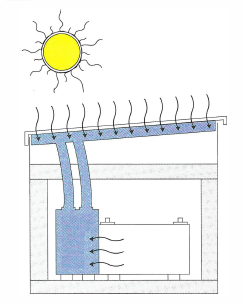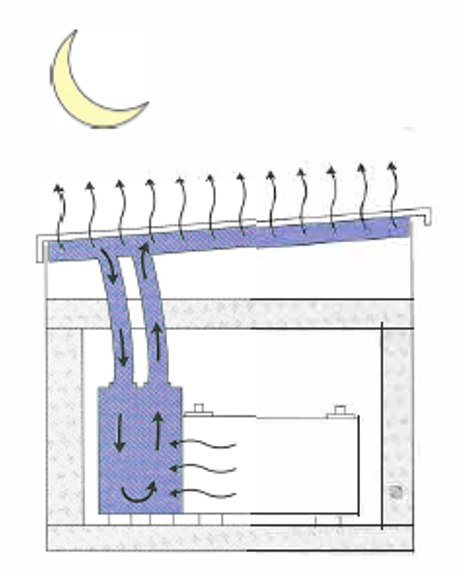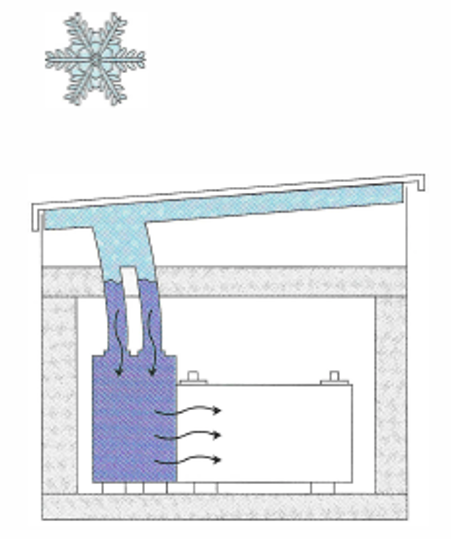The Electrical Technologies Passive Cooling Chamber protects batteries from destructive temperature extremes in the harshest climates. It can double or triple battery life in hot weather and insures at least 80% capacity in the cold. The principle is a passive cooling/heating reservoir and radiator filled with regular water. It comes standard with a hydrogen venting system as well.
In Hot Weather:
- Battery manufacturers state that for every 15 degrees Fahrenheit in operating temperature over 77 degrees Fahrenheit, the life of the cell may be cut by 50% and full warranties are voided.
- Higher temperatures promote higher recombination rates and lead to decreased internal resistance, greatly increasing the potential for thermal runaway during charging.
- High temperatures cause accelerated grid corrosion and increased out-gassing that reduces charge efficiency. Out gassing can also cause turbulence in the cell that may damage the grid and permanently reduce efficiency.
In Cold Weather:
- A battery typically loses 45% of its normal capacity at 4 degrees Fahrenheit, at -20 degrees Fahrenheit it will lose 70% of its capacity. Without cold weather protection, extra batteries must be added to insure adequate capacity.
- Below-freezing temperatures and thermal cycling promote sulfation, causing decreased battery capacity, grid damage, and permanent plate damage.


SUMMER DAY COOLING
During the hot summer days, water in the patented system absorbs heat from batteries, equipment, and solar gain.

SUMMER NIGHT COOLING
During summer nights, warm water rises to the lid, radiates its heat to the cold night sky, and sinks back into the enclosure. This thermo-siphon action removes heat from the system throughout the night.

WINER/NIGHT FREEZE PROTECTION
During very cold weather, water in the tank freezes, releasing 1 kWh of heat into the enclosure for each 3 gallons of water in the system. For additional protection in extremely cold climates, an optional variable output heater can be used to reverse this phase change, extending the freeze protection cycle indefinitely.
These passive cooling chambers are designed to harvest daily temperature fluctuations to provide a suitable environment for batteries, without the need of air conditioning systems, saving the substation auxiliary power.









